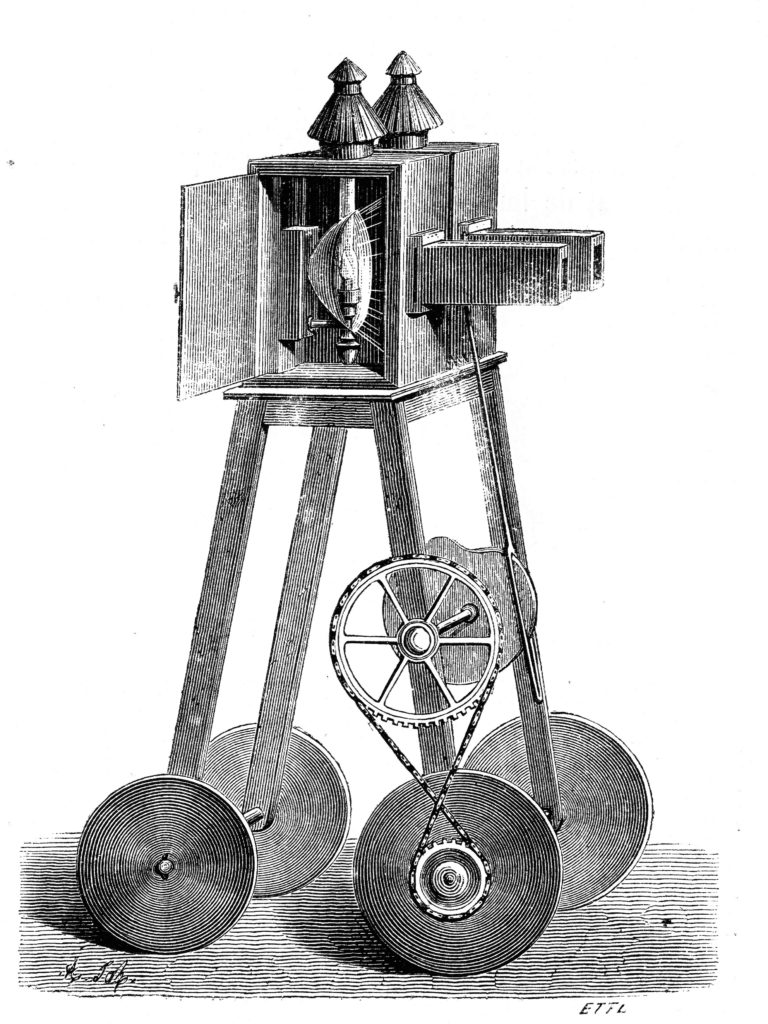Phantasmagorical Shows
The earliest true illuminated projection shows go back to the second half of the XVIIIth century, a period of torment, which saw a revival of interest in the Middle Ages and the Gothic period. Macabre décors, atmospheres imbued with mystery, melancholy and the supernatural came into their own in the literature and in the shows, which enjoyed a huge success.
These portrayals, known as phantasmagorias, adeptly staged diabolical intrigues and phantoms with the aid of retro-projection, a moving lamp and two sets of semi-transparent mirrors surrounded by a macabre décor and heightened with lugubrious sounds. The compère and his assistants tried to impress the audiences … and succeeded!
The Fantasmagorias of Robertson shown at the Convent of the Capucins at Paris at the end of the XIXth century remain the most famous example! Robertson published his Memoirs in 1831, and applied for a patent for his lantern, the fantascope, mounted on feet sliding along two rails and equipped with an optical tube with interchangeable lenses.


